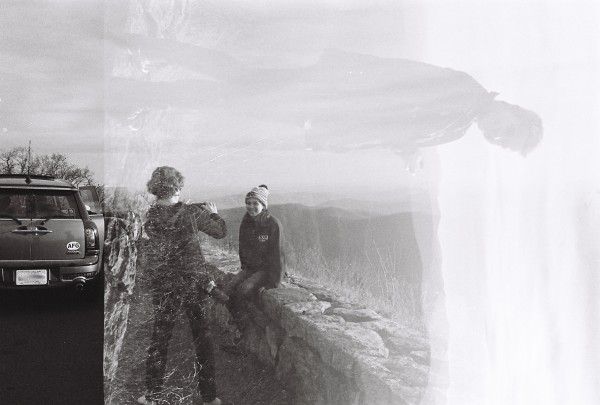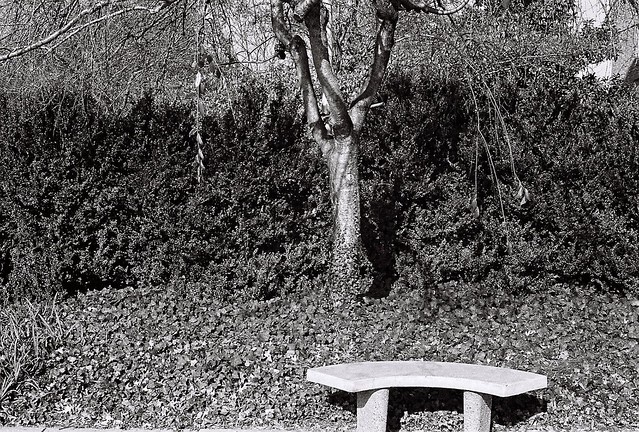There’s not a lot of information on the ‘net about it, but the Minolta Minoltina-S, marketed upon its release in 1964 as the world’s smallest rangefinder with a built-in light meter is a solid little camera with a fast (f/1.8) 40mm lens. Mine came to me in a box of random vintage-camera-related junk I bought on eBay (see “Confessions of an eBay Junkie”), and it didn’t work right away but was easy to disassemble and fix. If I remember correctly, the shutter speed wasn’t engaging when I tried to change it.
For unknown reasons, the first couple of shots double-exposed – shame, because I think I lost a pretty good shot in the process – but this was the only time this happened in the two rolls I put through the camera. The black-and-white shots were incredibly sharp and detailed for a 50-year-old camera.
The color photos were generally a little grainy, maybe just a bit underexposed. 
The advantage of the old cameras like this one that use a selenium meter is that you don’t need to track down impossible-to-find batteries – often finding ways to replace mercury batteries with odd voltages that haven’t been manufactured in years. But the disadvantage is that the selenium light meters wear out over time. The fact that they managed to link the aperture and light speed settings with the meter somehow, and translate the result to a needle/light meter on top of the camera way back in 1964 seems pretty incredible to me.
 Often it is possible to compensate once you get to know your camera. Some of my cameras I just overexpose slightly and that’s fine, but I have found others to behave inconsistently. Apparently there are a lot of theories out there as well as factors that can affect the meter – exposure to light over time, long storage in the dark, corrosion, dropping – but as long as your camera is fully automatic (like this one) it is usually possible to compensate and/or use the “sunny 16” rule. The same goes for the rangefinder feature on this camera. Like many older rangefinders, it’s nearly impossible to see the second image through the viewfinder in order to focus accurately. But “going manual” (i.e. estimating distance and setting the focus dial accordingly) worked pretty well, although I didn’t really test the larger aperture settings and shorter distances.
Often it is possible to compensate once you get to know your camera. Some of my cameras I just overexpose slightly and that’s fine, but I have found others to behave inconsistently. Apparently there are a lot of theories out there as well as factors that can affect the meter – exposure to light over time, long storage in the dark, corrosion, dropping – but as long as your camera is fully automatic (like this one) it is usually possible to compensate and/or use the “sunny 16” rule. The same goes for the rangefinder feature on this camera. Like many older rangefinders, it’s nearly impossible to see the second image through the viewfinder in order to focus accurately. But “going manual” (i.e. estimating distance and setting the focus dial accordingly) worked pretty well, although I didn’t really test the larger aperture settings and shorter distances. 
You can see other photos taken with this camera at this Flickr album; and see other cameras in my collection at the “Vintage Cameras” tab above.




